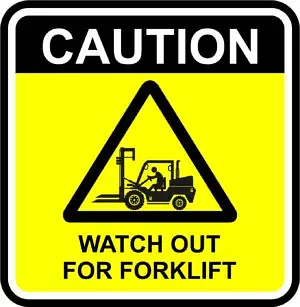 While there are many different types of forklifts, much of the equipment shares some basic designs and controls. It’s important for anyone learning how to drive a forklift to not only understand each of these controls, but also to undergo official forklift training and certification. A driver should also stay current with the best safety practices such as the important loading dock safety tips below. Getting hands-on practice on the individual equipment you will be using is also key. While you may know how to operate a forklift, you also need real-life experience in the different environments in which you will be using the machinery. With advancements in technology and frequently changing conditions that forklift operators may face, it’s important to keep up with changes in the industry, while maintaining a basic understanding of the principles of operation.
While there are many different types of forklifts, much of the equipment shares some basic designs and controls. It’s important for anyone learning how to drive a forklift to not only understand each of these controls, but also to undergo official forklift training and certification. A driver should also stay current with the best safety practices such as the important loading dock safety tips below. Getting hands-on practice on the individual equipment you will be using is also key. While you may know how to operate a forklift, you also need real-life experience in the different environments in which you will be using the machinery. With advancements in technology and frequently changing conditions that forklift operators may face, it’s important to keep up with changes in the industry, while maintaining a basic understanding of the principles of operation.
As you start your forklift education, here is an introduction to the common controls many forklifts will have:
- Hydraulic lift knobs: These three knobs allow the forks to move up and down, tilt and move side to side.
- Forklift directional controls: Like a standard vehicle, these directional controls enable the machinery to shift from forward to neutral to reverse. The controls are typically mounted to a steering column or operated by foot.
- Accelerator pedal: This foot-operated pedal gives the forklift the speed and power to move in a designated direction
- Brake pedal: Like the accelerator, the foot-operated brake halts the equipment from moving.
- Clutch pedal: An option on some forklifts, particularly those used in outdoor spaces, this pedal can provide added acceleration.
- Inching pedal: Operated by the left foot, this pedal allows operators to navigate inch by inch. This can be particularly useful for drivers as they attempt to navigate into tight spaces.
- Parking brake: Like your vehicle’s emergency brake, this pedal ensures the forklift stays in place when not in use, especially important for when it is parked on an inclined surface.
It’s important for all forklift operators to understand the basic ins and out of how to drive a forklift before they even begin their formal training. However, such training is essential to ensure drivers can not only demonstrate this knowledge but can put it into practice in the varied settings in which forklifts are used. Getting certified, and then ultimately recertified, can help operators to ensure they’re working in the safest conditions, adding to their productivity.
Ensuring that you’re officially trained and certified to operate a forklift is critical. For more information on forklifts and training certification, contact us today. And if you’re interested in buying a used forklift be sure to check out our expansive inventory of great products!
